Terror, resistance and trauma in Papua (Indonesia) - PapuaWeb
Terror, resistance and trauma in Papua (Indonesia) - PapuaWeb
Terror, resistance and trauma in Papua (Indonesia) - PapuaWeb
- No tags were found...
Create successful ePaper yourself
Turn your PDF publications into a flip-book with our unique Google optimized e-Paper software.
II.<br />
The Dialectic of <strong>Terror</strong> <strong>and</strong> Resistance<br />
While the transition of power was under way, the <strong>Indonesia</strong>n adm<strong>in</strong>istration took all necessary<br />
measures, <strong>in</strong>clud<strong>in</strong>g coercive measures, to ensure that the result of the UN supervised plebiscite was<br />
<strong>in</strong> favour of <strong>Indonesia</strong>. Patchy records of the 1963-1969 history reported at least n<strong>in</strong>e cases of<br />
torture as a result of the implementation of coercive measures to oppress dissidents oppos<strong>in</strong>g<br />
<strong>Indonesia</strong> (Vlasblom 2004). Often these dissidents were pursu<strong>in</strong>g the right to self-determ<strong>in</strong>ation<br />
guaranteed by the 1962 New York Agreement. For example, the Mee people <strong>in</strong> the Paniai region<br />
expressed their strong opposition to the <strong>Indonesia</strong>n presence by attack<strong>in</strong>g the military post <strong>and</strong> the<br />
government offices <strong>in</strong> Enarotali, the district capital. The <strong>in</strong>cident began <strong>in</strong> February 1969 <strong>and</strong><br />
cont<strong>in</strong>ued until August 1969 (Giay 1993; Djopari 1993; Vlasblom 2004).<br />
The ongo<strong>in</strong>g resentment eventually culm<strong>in</strong>ated <strong>in</strong> the creation of a movement called Organisasi<br />
Pembebasan Papoea Merdeka (OPM) (Vlasbloom 2004; Djopari 1993). OPM was established <strong>in</strong><br />
1964 <strong>in</strong> Manokwari as the most outst<strong>and</strong><strong>in</strong>g reaction to the presence of the <strong>Indonesia</strong>n authorities.<br />
Once the so-called “Act of Free Choice” unanimously agreed that <strong>Papua</strong> would be <strong>in</strong>tegrated <strong>in</strong>to<br />
<strong>Indonesia</strong>, General Soeharto, who had recently <strong>in</strong>stalled Orde Baru (the New Order), strengthened<br />
<strong>Indonesia</strong>n control over the territory through an extensive <strong>and</strong> centralised military comm<strong>and</strong>. At the<br />
same time, OPM had <strong>in</strong>augurated its first battle aga<strong>in</strong>st the <strong>Indonesia</strong>n authority. Its guerilla war<br />
resulted <strong>in</strong> 17 major attacks on the military <strong>and</strong> police <strong>in</strong>stallations across <strong>Papua</strong> dur<strong>in</strong>g 1964-1977<br />
(Djopari 1993: 109; Vlasblom 2004).<br />
For the <strong>Papua</strong>ns, OPM symbolises <strong>resistance</strong> aga<strong>in</strong>st the terror that has tried to control the <strong>Papua</strong>ns<br />
through fear-controlled mechanisms. Under the New Order regime, Soeharto deployed a highly<br />
centralised military comm<strong>and</strong> to eradicate communism <strong>in</strong> 1965 (Roosa 2008:38). As a<br />
consequence, the <strong>Indonesia</strong>n authority exercised its power through its military comm<strong>and</strong>s across<br />
<strong>Papua</strong>, from the village level (Bab<strong>in</strong>sa) up to the prov<strong>in</strong>cial level even before WNG was officially<br />
<strong>in</strong>tegrated <strong>in</strong>to <strong>Indonesia</strong>. The top <strong>and</strong> key positions of the local governments were occupied by topranked<br />
military officers <strong>and</strong> various special military operations were launched to eradicate the<br />
separatist groups of OPM, <strong>in</strong>clud<strong>in</strong>g Operasi Sadar (1965-1967), Operasi Bharatayuda (1967-1969),<br />
Operasi Wibawa (1969), Operasi Jayawijaya (1977), Operasi Sapu Bersih I <strong>and</strong> II (1981) <strong>and</strong> the<br />
status of Daerah Operasi Militer (DOM/ Military Operation Zone) dur<strong>in</strong>g 1980s until 1998.<br />
Hav<strong>in</strong>g combated the communist threat through the use of torture (Roosa 2008:34), the Orde Baru<br />
regime <strong>in</strong>troduced a similar method to <strong>Papua</strong>. Accord<strong>in</strong>g to the cases that I have collected on torture<br />
<strong>in</strong> <strong>Papua</strong> s<strong>in</strong>ce 1963, 393 <strong>in</strong>dividual cases of torture across <strong>Papua</strong> have been documented, not<strong>in</strong>g the<br />
identity of victims <strong>and</strong> a factual description. A further 14 cases require further documentation. My<br />
prelim<strong>in</strong>ary research shows that most of the victims are farmers, males <strong>and</strong> highl<strong>and</strong>ers who live <strong>in</strong><br />
the rural areas. Only two cases <strong>in</strong>volve victims who were OPM members, with none be<strong>in</strong>g an OPM<br />
leader. All female victims were sexually abused, raped or sexually enslaved. Some victims were<br />
deta<strong>in</strong>ed for a short period of time, but most victims were never charged nor brought before a court.<br />
On the side of perpetrators, the 2000 Abepura case of torture is the only case where the perpetrators<br />
(two police officers) were brought to the human rights court <strong>and</strong> eventually acquitted. Therefore,<br />
the perpetrators have enjoyed complete impunity.<br />
Another dist<strong>in</strong>ctive characteristic that might differentiate the <strong>Papua</strong> torture from the 1965 situations<br />
<strong>in</strong> Aceh <strong>and</strong> Timor Leste is that no report shows any particular places designated for a torture<br />
chamber. Most cases were deliberately committed <strong>in</strong> front of a public audience, whilst some<br />
occurred <strong>in</strong> ord<strong>in</strong>ary military <strong>and</strong> police posts.<br />
Given that most victims were never charged or sentenced, <strong>and</strong> many were tortured <strong>in</strong> public, I<br />
would argue that torture <strong>in</strong> <strong>Papua</strong> does not aim at extract<strong>in</strong>g real <strong>in</strong>formation on OPM. Instead,<br />
3



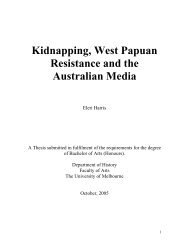
![[1958: Gahuku]. - PapuaWeb](https://img.yumpu.com/25139694/1/190x245/1958-gahuku-papuaweb.jpg?quality=85)
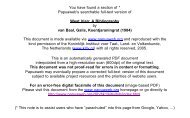


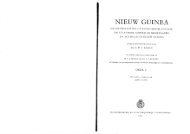
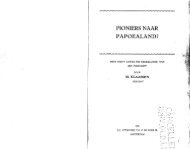
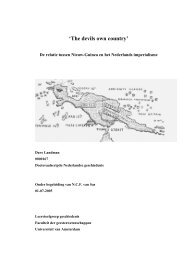
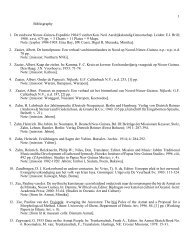
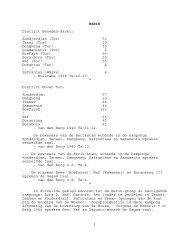

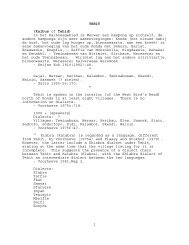
![1 EKARI (EKAGI) [Map] (cf S&C) Akaromani Apoejai ... - PapuaWeb](https://img.yumpu.com/19731685/1/190x245/1-ekari-ekagi-map-cf-sc-akaromani-apoejai-papuaweb.jpg?quality=85)
![WUTUNG [passim in text] Wutung (Oenaki, Oinåke) - Friederici ...](https://img.yumpu.com/15960045/1/190x245/wutung-passim-in-text-wutung-oenaki-oinake-friederici-.jpg?quality=85)